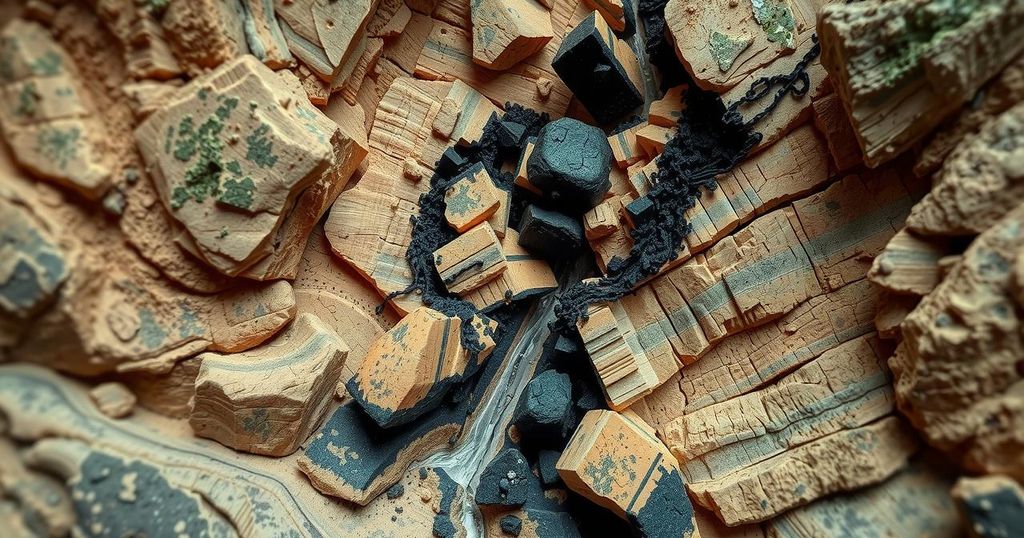Companies
0. 6 METERS, ARGENTINA, ASTRA, ASTRA EXPLORATION, ASTRA EXPLORATION INC, BOLIVIA, BRIAN MILLER, BRITISH COLUMBIA, CANADA, DESEADO MASSIF, EMPLOYMENT, ENERGY, HIGH - GRADE VEINS, INDUSTRY, INFRASTRUCTURE, LA MANCHURIA, LA MANCHURIA PROJECT, LA MANCHURIA VANCOUVER, MAIN ZONE, MINING, NEWSFILE CORP, NORTH AMERICA, SANTA CRUZ, SOUTH AMERICA, VANCOUVER
Fatima Khan
0 Comments
Astra Exploration Discovers High-Grade Gold and Silver at La Manchuria Project
Astra Exploration Inc. announces strong drilling results from La Manchuria Project, including 199.3 g/t gold and 228 g/t silver over 0.6 m. CEO Brian Miller highlights the discovery of a larger vein system with multiple high-grade intervals. The company plans a Phase II drilling program, backed by approximately $2 million in funding, focusing on expanding mineral boundaries.
Astra Exploration Inc. has announced impressive results from its drilling efforts at the La Manchuria Project in Argentina’s Deseado Massif. Among the highlights, drill hole LM-107A revealed 1.6 meters grading 75.09 grams per tonne (g/t) gold and 86.79 g/t silver, including an exceptional 0.6 meter section with 199.3 g/t gold and 228 g/t silver. These findings indicate a robust vein system that could extend further than initially recognized. The company is well-funded for an additional drilling phase aimed at exploring these developments further.
The first phase of drilling consisted of 11 diamond drill holes, totaling 2,468 meters. Astra’s exploration team targeted four areas, and the results from seven holes have provided significant insight into the mineralization patterns in multiple zones. These new findings suggest promising high-grade mineralization trends and affirm the company’s earlier geological models that predicted the potential for deeper veins beyond the post-mineral cover in regions previously unexplored.
“Astra’s first drilling program at La Manchuria indicates a much larger vein system than previously recognized,” said Brian Miller, CEO of Astra Exploration. The drilling not only confirmed existing models but also uncovered substantial grades at depths and along various directions—southeast, northwest, and southwest. The results are particularly encouraging for the Main Zone, where an extension beneath recent cover was newly identified.
Drill holes to the southeast like LMD-107A had a noteworthy intersection of high-grade veins—a banded quartz vein with black sulfides grading at 199.3 g/t gold. The current drilling shows a complex structure on the southeast and indicates how lithology controls grade distributions. The plan includes further drilling in this area to refine understanding of this high-grade mineralization.
Meanwhile, the northwest drilling efforts, particularly hole LMD-113, found mineralized structures that could signify either an extension of the Main Zone or new veins nearby. This included several high-grade intervals that are yet to fully yield results deeper down. This area presents potential, as these structures remain open along strike and could lead to greater discoveries with continued efforts.
In the Eastern Zone, two drill holes, LMD-112 and LMD-114, tested earlier findings. LMD-112 confirmed new veins with a notable 4.0 meters at 7.6 g/t gold and minor silver, while LMD-114 encountered some veining without significant measures. More drilling is needed in this zone, with findings thus far demonstrating a positive trend in silver and gold concentrations.
Looking forward, Astra plans a Phase II drill program with a budget of around $2 million to explore these exciting new findings. The company is in a strong position to continue its investigation into the La Manchuria district while ensuring its operational capabilities are fully funded. Astra’s commitment to building a rich portfolio in key South American locales suggests a bright and possibly lucrative future for the firm.
Astra Exploration’s latest announcements underscore promising high-grade gold and silver discoveries at the La Manchuria Project in Argentina. With significant results indicating an expansive vein system and well-funded plans for a Phase II drilling program, the company is well-positioned for further exploration and growth in the area. Exploration efforts not only reaffirm Astra’s geological models but suggest significant mineralization potential across various zones, pointing to a potentially prosperous future in these advancing mining territories.
Original Source: www.juniorminingnetwork.com




Post Comment